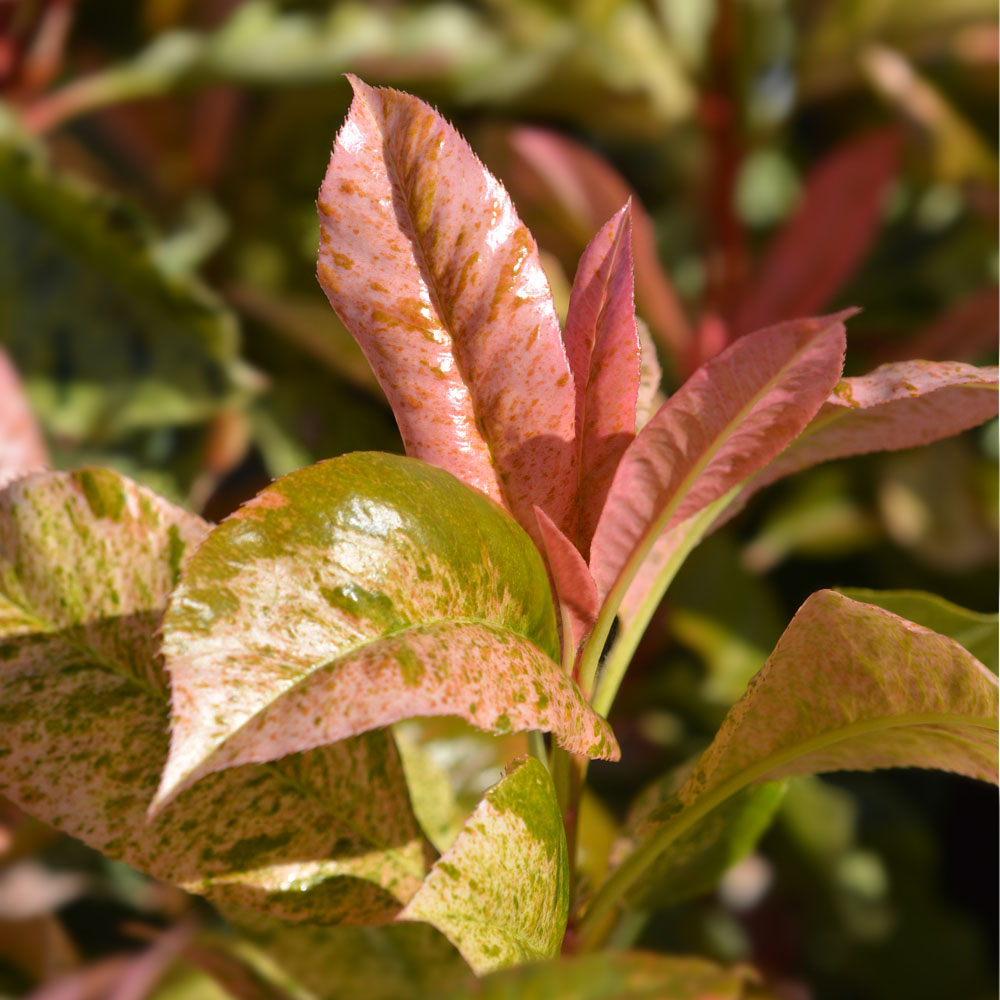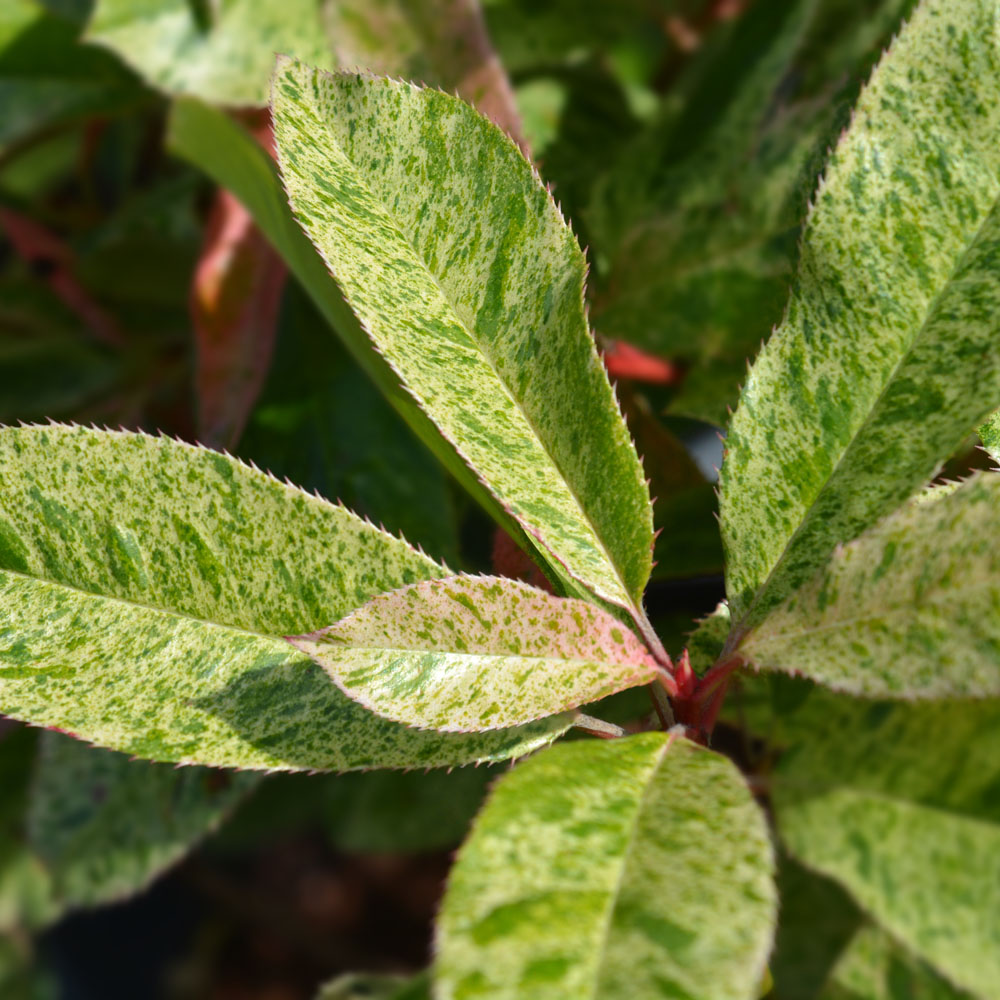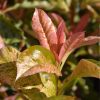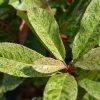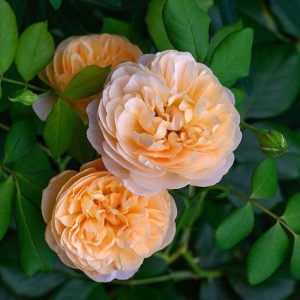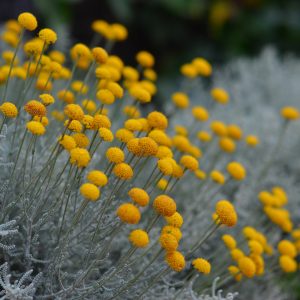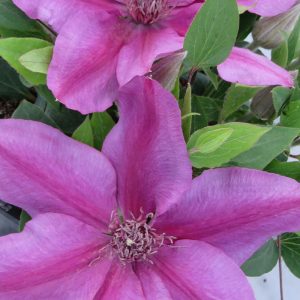Description
Photinia serratifolia ‘Pink Crispy’ is a stunning evergreen shrub that adds year-round interest to any garden. It features glossy, serrated green leaves with splashes of pink, cream, and white variegation that become more pronounced in cooler weather. In spring, clusters of small white flowers appear, followed by red berries in autumn, which add to the plant’s appeal. ‘Pink Crispy’ grows to a height of around 2m and a spread of 1.2m, making it an ideal choice for hedges or as a standalone specimen. This shrub prefers full sun to partial shade and well-draining soil. It also benefits from regular pruning to maintain its shape and promote healthy growth. Consider pairing ‘Pink Crispy’ with other evergreen shrubs like boxwood, holly, or yew for a stunning display of foliage textures and colors.
Key Facts
- Common Name(s):Chinese Hawthorn ‘Pink Crispy’
- Hardiness:Fully hardy through most of the UK
- How big will I get? Photinia serratifolia ‘Pink Crispy’ can grow to a height of 2m and a spread of 1.2m.
- Did You Know That:The name “Photinia” comes from the Greek words “photeinos” and “phos,” meaning “shining” or “bright,” a reference to the glossy leaves of the plant?
Plant Calendar
A rough guide to how this plant will change through the year.
| Jan | Feb | Mar | Apr | May | June | July | Aug | Sept | Oct | Nov | Dec | |
| Flowering Time | 
| 
| ||||||||||
| Foliage Colour |   |
  |
   |
   |
   |
   |
   |
   |
  |
  |
  |
  |
| J | F | M | A | M | J | J | A | S | O | N | D |

| 
| ||||||||||
  |
  |
   |
   |
   |
   |
   |
   |
  |
  |
  |
  |
Care Guide

Soil Requirements
Photinia serratifolia ‘Pink Crispy’ is a versatile plant and can cope with wet or drier soils, but prefers there to be decent drainage. This plant is not tolerant of alkaline soil, it requires either a neutral or acidic soil to grow.

Best Position
Photinia serratifolia ‘Pink Crispy’ prefers a sheltered position and can cope with either full sun or partial shade.

Maintenance
Photinia serratifolia ‘Pink Crispy’ is fairly low maintenance and doesn’t require any pruning.

Pest, Diseases and Wildlife
Photinia serratifolia ‘Pink Crispy’ can have problems with vine weevil, it can be vulnerable to certain diseases such as leaf spot. It is not considered to be toxic.
